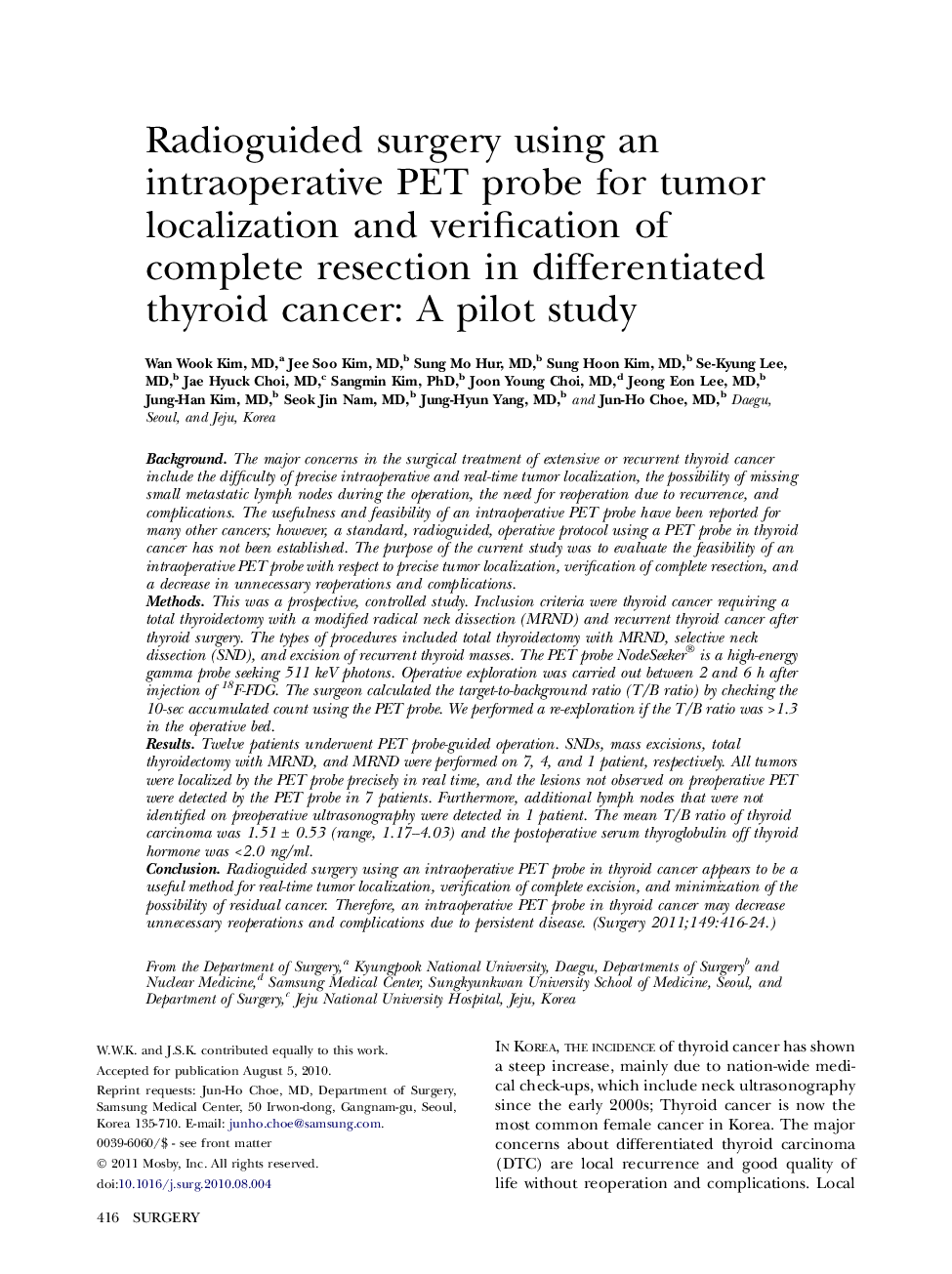| Article ID | Journal | Published Year | Pages | File Type |
|---|---|---|---|---|
| 4308177 | Surgery | 2011 | 9 Pages |
BackgroundThe major concerns in the surgical treatment of extensive or recurrent thyroid cancer include the difficulty of precise intraoperative and real-time tumor localization, the possibility of missing small metastatic lymph nodes during the operation, the need for reoperation due to recurrence, and complications. The usefulness and feasibility of an intraoperative PET probe have been reported for many other cancers; however, a standard, radioguided, operative protocol using a PET probe in thyroid cancer has not been established. The purpose of the current study was to evaluate the feasibility of an intraoperative PET probe with respect to precise tumor localization, verification of complete resection, and a decrease in unnecessary reoperations and complications.MethodsThis was a prospective, controlled study. Inclusion criteria were thyroid cancer requiring a total thyroidectomy with a modified radical neck dissection (MRND) and recurrent thyroid cancer after thyroid surgery. The types of procedures included total thyroidectomy with MRND, selective neck dissection (SND), and excision of recurrent thyroid masses. The PET probe NodeSeeker® is a high-energy gamma probe seeking 511 keV photons. Operative exploration was carried out between 2 and 6 h after injection of 18F-FDG. The surgeon calculated the target-to-background ratio (T/B ratio) by checking the 10-sec accumulated count using the PET probe. We performed a re-exploration if the T/B ratio was >1.3 in the operative bed.ResultsTwelve patients underwent PET probe-guided operation. SNDs, mass excisions, total thyroidectomy with MRND, and MRND were performed on 7, 4, and 1 patient, respectively. All tumors were localized by the PET probe precisely in real time, and the lesions not observed on preoperative PET were detected by the PET probe in 7 patients. Furthermore, additional lymph nodes that were not identified on preoperative ultrasonography were detected in 1 patient. The mean T/B ratio of thyroid carcinoma was 1.51 ± 0.53 (range, 1.17–4.03) and the postoperative serum thyroglobulin off thyroid hormone was <2.0 ng/ml.ConclusionRadioguided surgery using an intraoperative PET probe in thyroid cancer appears to be a useful method for real-time tumor localization, verification of complete excision, and minimization of the possibility of residual cancer. Therefore, an intraoperative PET probe in thyroid cancer may decrease unnecessary reoperations and complications due to persistent disease.
